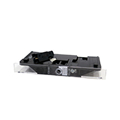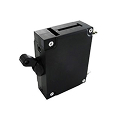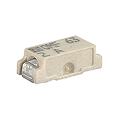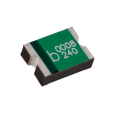Overcurrent protection covers devices that cut, limit, or reset a circuit when current rises beyond a safe threshold. Think of them as safety guards for your wiring, power supplies, and sensitive semiconductors, preventing damage, fire risk, and costly downtime. Online Components supports this category with reliable stock depth and fast United States (U.S.) shipping, giving purchasers and engineers confidence when timelines are tight. The selection spans fast-acting and time-delay fuses, polymer positive temperature coefficient (PTC) resettable fuses, and circuit breakers. Key specifications include current and voltage ratings, interrupt rating, current-squared time (I2t), trip curve, mounting style such as surface-mount technology (SMT) or through-hole, and approvals from Underwriters Laboratories (UL) or the International Electrotechnical Commission (IEC).
Begin with the fault profile and normal operating window for the circuit. Some builds call for rapid interruption to safeguard metal-oxide-semiconductor field-effect transistors (MOSFETs) and integrated circuits (ICs). Others benefit from time-delay behavior that rides through inrush or motor start. Match current rating, voltage rating, and interrupt rating to the rail and available fault energy, then apply I²t to balance protection against nuisance trips. Consider reset behavior and service needs: single-use fuses are compact and predictable, while PTC resettable fuses and eFuses speed recovery and cut field labor. Confirm ambient temperature, board density, and any agency certifications required for your market.
Purchasing teams, design engineers, and maintenance, repair, and operations (MRO) technicians shop this category when safety and uptime are critical. Consumer devices rely on fuses and PTCs to protect battery-powered circuits and Universal Serial Bus Power Delivery (USB-PD) power paths. Industrial automation and factory controls use breakers and cartridge fuses to protect motors, relays, programmable logic controller (PLC) input/output, and control transformers. Automotive and transportation electronics depend on blade-style fuses, Automotive Electronics Council qualification (AEC-Q) parts, and eFuses for infotainment, advanced driver assistance systems (ADAS), and lighting. Telecom gear applies current limiting and hot-swap on high-availability backplanes and power shelves.
Online Components carries U.S.-based inventory, ships fast, and sources from authorized channels with supplier authentication for traceable supply. The site offers searchable specs, data sheets, and parametric filters. Checkout flows smoothly, customer service responds quickly, and same-day fulfillment is available on in-stock lines. Our pricing stays competitive while minimums remain low, so prototypes and production both move forward without delay.
Fast-acting parts open quickly on modest overloads and short circuits. Time-delay parts tolerate brief inrush or start-up current, then open on sustained overload.
Choose a PTC when automatic recovery and lower service labor matter. Use a one-time fuse when you want a defined, permanent open that signals a service event.
It's the maximum fault current a device can safely stop without rupturing. Select a value at or above the available fault current on the protected rail.
I2t, or current-squared time, describes the energy let-through during a fault. Lower I2t typically means better protection for traces and semiconductors during short events.
See More





